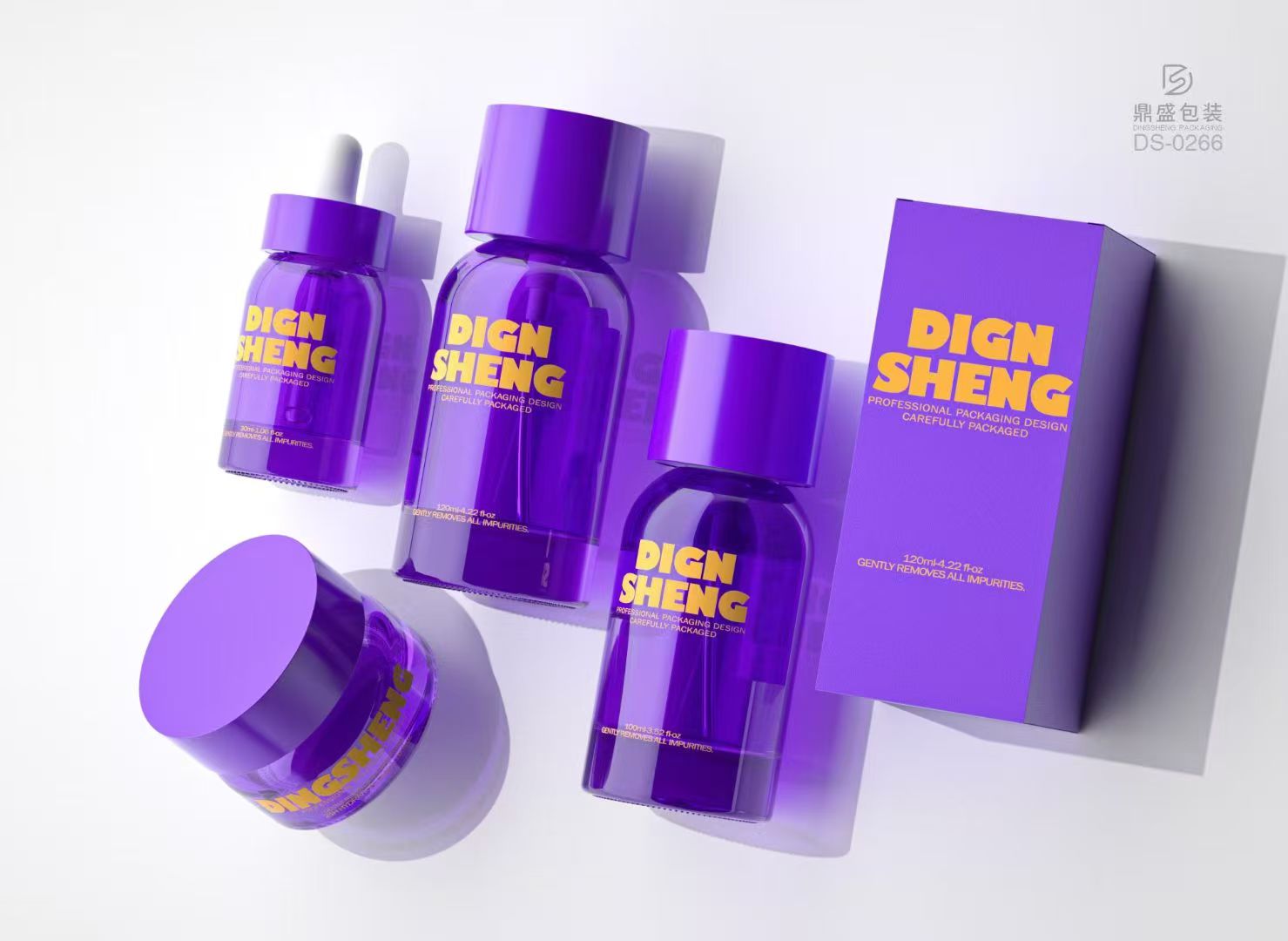Cosmetic Glass Bottles — Manufacturing & Breakage Issues | Dingsheng Glass
Sep 12, 2025
Cosmetic glass bottles — Manufacturing & Breakage Issues
Although cosmetic glass bottles are prized for their premium appearance and chemical stability, breakage and cracking can occur during manufacturing, filling, or distribution. This article examines common causes of cracking, neck failures, the effects of recycled glass, and practical solutions to reduce breakage risk.
Why do cosmetic glass bottles sometimes crack during filling?
Thermal shock and rapid temperature change
When bottles are exposed to sudden temperature differences—such as pouring hot product into a cold bottle—thermal stresses can create microfractures or immediate cracks. Proper temperature control of both bottle and formula is essential during filling.
Internal pressure during filling
Formulations that outgas or contain volatile components may produce internal pressure during filling and sealing. If filling lines do not allow venting, the resulting pressure can lead to cracking, especially in thinner bottle areas.
Mechanical stress from filling equipment
High-speed automated fillers can create impact or point stresses if bottles are not supported correctly. Misalignment, sharp contact points, or uneven handling leads to mechanical stress and breakage.
What factors contribute to bottle neck cracking?
Neck geometry and wall thickness
Necks are typically thinner than the body and are shaped to accommodate closures. Variations in wall thickness or uneven glass distribution during molding can create weak zones prone to cracking.
Threading and closure torque
Applying excessive torque or using closures with incompatible threads can concentrate stress at the neck. Cross-threading also damages the neck finish and creates initiation points for cracks.
Material inclusions and bubbles
Small inclusions or entrapped bubbles formed during glass melting can reduce the mechanical strength of the neck region. Strict control of the glass melt and forming environment reduces this risk.
How does using recycled glass affect breakage risk?
Benefits of recycled cullet
Using cullet reduces raw material demand and energy consumption. It is an important sustainability tool and, when processed correctly, can deliver bottles of equal strength to virgin glass.
Potential challenges with recycled content
Poorly sorted or contaminated cullet can introduce impurities that act as stress concentrators. Variation in color or composition can also affect furnace control and forming behavior.
Best practices to mitigate recycled glass risks
High quality sorting and cleaning of cullet.
Blending cullet with virgin sand to achieve consistent chemistry.
Enhanced QC to catch surface defects and inclusions before filling.
How manufacturers minimize breakage issues
Advanced production techniques
Precision molding and controlled annealing (gradual cooling) reduce internal stresses. Automated inspection systems catch defects early while improved mold design yields uniform wall thickness.
Post-processing and surface treatments
Annealing relieves residual stress. Surface coatings and tempering can increase scratch and impact resistance. Ultrasonic cleaning prior to filling ensures no particulate contamination that might create pressure points.
Quality management and testing
ISO-9001 certified processes help maintain consistency. Drop testing, pressure testing, thermal shock cycles and simulated filling line tests validate bottle design under real use conditions.
Practical steps brands and fillers should take
Control bottle and formula temperature during filling; avoid abrupt temperature differences.
Confirm neck finish and closure compatibility; use torque controls on cappers.
Require QC data from glass supplier on cullet content, annealing profile and defect rates.
Run pilot filling trials at production speeds to detect handling issues before a full launch.
Dingsheng’s manufacturing plant uses precision forming, annealing ovens and in-line inspections to reduce breakage rates. For brands shifting to recycled glass content, Dingsheng provides blended material strategies and pre-production validation to balance sustainability with reliability.
Conclusion
Breakage in cosmetic glass bottles is preventable when manufacturers and brands understand the causes—thermal shock, internal pressure, mechanical stress, and material quality. With controlled production, careful selection and refinement of recycled glass, proper filling procedures and robust quality management (ISO-9001), brands can enjoy the benefits of glass packaging while minimizing risk.

 Network Supported
Network Supported